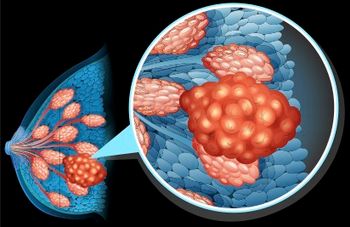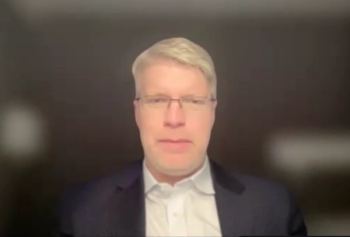
Mitigating AEs and Protecting QOL Following Talquetamab in Multiple Myeloma
Samantha Shenoy, NP, MSN, discusses how her role plays a vital part in patient care for those receiving talquetamab for multiple myeloma.
CancerNetwork® collaborated with CURE® to speak with Samantha Shenoy, NP, MSN, a nurse practitioner at the Cancer Immunotherapy Clinic of University of California San Francisco (UCSF) Health, about the role she plays when treating patients with multiple myeloma who are receiving talquetamab-tgvs (Talvey). Of note, emphasis was placed on managing treatment-emergent adverse effects (TRAEs) and toxicities that may impact quality of life.
Shenoy foregrounded the discussion by outlining the role of nurses in facilitating the management of toxicities and providing education to patients in both an inpatient and outpatient capacity. She subsequently discussed common skin, oral, and dermatologic toxicities, as well as how they impact patient quality of life.
Furthermore, she touched upon taking an aggressive approach to addressing early-grade cytokine release syndrome (CRS), placing an emphasis on close adherence to UCSF clinical guidelines for treating it. Additionally, Shenoy acknowledged the possibility of neurological effects occurring as a result of treatment with talquetamab, although she stated she has not observed any in her experiences with using the bispecific.
Shenoy disclosed talquetamab-related monitoring parameters, indicating that taste changes and weight loss were notable risks. Particularly for weight loss, she mentioned that she regularly checks in with patients about their eating habits and weight. Furthermore, methods for living with taste changes were discussed, which included recommendations for prophylactics, dietary modifications, and dry mouth remedies.
Shenoy continued by suggesting that the efficacy seen with talquetamab, particularly as part of a combination therapy, makes it an impactful agent. Citing her experience as part of the phase 1 TRIMM-2 trial (NCT04108195), where talquetamab was assessed in combination with daratumumab (Darzalex) in relapsed or refractory multiple myeloma, she claimed that combination therapies for bispecifics would become the new standard in this patient population.
She concluded by expressing her passion for educating patients about management strategies for multiple myeloma. Additionally, she further illustrated the sentiment through her experience witnessing patients continue treatment for several years while overcoming toxicities associated with talquetamab.
“I feel passionately about the fact that we can educate patients who are struggling at the beginning [to] hang in there. It is not going to last forever,” Shenoy stated. “I can imagine how frustrating it is [when you are not] able to taste, your mouth is dry, and your hands are peeling. Just know that it is not forever.”
Reference
Dholaria, BR, Weisel K, Mateos MV, et al. Talquetamab (tal) + daratumumab (dara) in patients (pts) with relapsed/refractory multiple myeloma (RRMM): updated TRIMM-2 results. J Clin Oncol. 2023;41(suppl 16). doi:10.1200/JCO.2023.41.16_suppl.8003
Newsletter
Stay up to date on recent advances in the multidisciplinary approach to cancer.



















































































